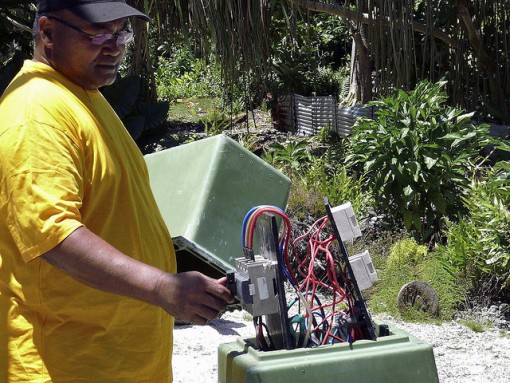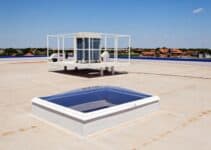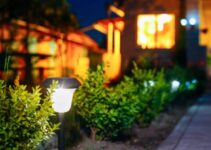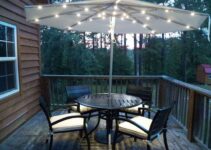Renewable energy is becoming a much more attractive proposition these days. With the rise in public awareness of global warming, the rising prices of fossil fuels, and the increased afford-ability and efficiency of renewable energy sources, solutions such as solar power are becoming much more popular and feasible for everybody.
For many, one of the most essential things to get sorted is a reliable generator. Generators are great for when you are traveling and need access to electrical power, or even for when there is a power outage in your place of residence. Historically, generators have tended to run off of fossil fuels such as gas and oil. However, these days the prospect of using solar energy to power a generator is a much more realistic one, and it does away with the need to buy up and store expensive fuels.
Maybe you just want to save a little money on your electric bill and cut out some of the power sources for a few of your appliances and machines. Maybe you want to go completely “off the grid” and power everything in your house, workplace, or underground bomb shelter through the power of solar energy. Whatever your reasons, using solar energy to power things around you can save a lot of money and make hazardous electronic power sources a thing of the past. So let’s take a look at how to make your very own solar-powered generator.
The use of solar energy has not been opened up because the oil industry does not own the sun.
– Ralph Nader
Of course, an important element with a generator is the price. While you can buy a solar panel generator, it is often cheaper to build it yourself using parts that can be found at hardware stores or over the Internet. By making use of these affordable materials, you will be able to create solar power generators for under $300 which will help you to generate power off of the main grid and increase your self-sufficiency.
Steps to Build Solar Power Generator
You’ll need a few hundred dollars worth of material to make this work. And while that may seem like a hefty investment for a do-it-yourself project, it will be worth it in the long run to save yourself the money of your electric bill.
1. The first thing you will need to do is buy yourself a solar panels depending on your available funds and the scope of your energy-saving, money-saving endeavor. These are relatively commonplace these days, and can be found in a range of hardware stores or online retailers. You can find solar panels for around $100 at home improvement stores like Lowe’s and Home Depot as well as online home decor shops, including Walmart.com. Another place to try is the Green Batteries Store.
If you can’t find them at your nearby store, you can look out for deals on various shopping sites like amazon.com and they might even offer you free shipping. For a small generator, you should look for a panel which has a rating of over 12 volts. For most, 16 volts is a good rating. This should set you back about $100, and represents the biggest chunk of the expenditure required.
2. Next you’ll need a battery. Now that you have the actual generator part of your generator, you need to purchase a battery in which the generate power will be stored. Without a battery, your panel will generate electricity which can be used directly with appliances, but will become useless once the sun goes behind cloud cover. The best batteries to look for are sold by green energy retailers who sell specialized batteries for just such a device. Batteries made for solar panels can also be found at the Green Batteries Store mentioned above, or at Batteries.com.
A deep cycle battery with a rating of 12 volts or higher is your best bet, as deep cycle batteries are the type for continuous use. A good battery should cost you around $60 depending upon the brand you get. You can’t use just any battery as different batteries have different functions: some collect energy, some dispel energy, and some crank gears (like automobile batteries).
3. Then get a storage device for your battery, something to house and cover it. A battery box is a useful accessory to have should you be planning to use this generator in any wet environment, or should you have children or animals around. The battery box will cover the exposed terminals of the battery, making it much less dangerous to anyone near it. These can be found in most any hardware store and should cost no more than about $10. Additionally, it is a good idea to buy a 12 volt DC meter, which should only be about $25.
4. The next component to purchase is a DC input device, which allows you to plug in any DC appliance you should need to power be it a pump, a generator, a stereo, or a television. They are often found with the cigarette lighters that are used with cars, and are very simple to install. DC input is great for powering smaller appliances such as fans, CD players, and other smaller accessories. A triple inlet DC input should only cost around $10, and is especially useful seeing as many appliances come with a DC cable pre-packaged.
5. While DC is very useful, the majority of modern appliances will run off of an AC current. In order to make your generator useful for these, you will need to invest in what is called an inverter. An inverter is a device that is used to convert the energy stored in the battery – DC energy – into more usable AC power. In order to find the right inverter for your generator, you will need to find an inverter which has ample wattage to run the appliances you wish to run from your generator. Large appliances like washing machines, dryers and more run on AC current.
The inverter will change your DC current to an AC charge that these devices will accept. Check the wattage of your appliances then find a suitable inverter. These, again, can be found at most good electronics or hardware stores, and should only cost around $50. A 115-volt AC 140-watt inverter should be adequate. Again, you can check out some deals on internet and buy the best deal.
How To Assemble Your Solar Generator?
Now that you’ve done your shopping (and what a list it was), you’re probably broke and ready to save some money. It’s time to connect everything.
- First, attach the 12 volt DC meter to the top of your battery box using a drill. Then do the same with the DC input module. This will allow ample access to both of these when the generator is in use.
- Next, get some insulated wire and use it to attach the 12 volt DC meter to the two wingnut terminals found on the battery. It is important to connect the negative pole first, before proceeding with the positive pole. You should attach the meter one wire at a time so as to avoid an electric shock. Next, connect the DC input to the battery the same way, using insulated wire and connecting it one pole at a time. Finally, affix the solar panel to the battery’s wingnut terminals in exactly the same way and make sure to give the solar panel plenty of extra wire, so you can place it where it can catch some sunlight. When this is complete, the circuitry should be in proper working order. As an added safety precaution, wear insulated gloves while you do this, and only use insulated wiring for the job.
- Make sure to firmly close the lid of the battery box in order to prevent any unwanted moisture from getting onto the battery or the modules. This is important for the safety and longevity of your generator. Make use of rope or chord if the box feels insecure. Put the solar panel out in the sun and leave it for a few hours to charge. It generally takes a solar panel about 6-8 hours to get fully charged a dead battery, and it will provide about 6 hours of charge per panel.The charging process for a brand new battery may take up to eight hours, while a weak battery should charge in about four.

What Can Solar Generator Be Used For?
- Of course, a small, budget generator such as this one is not enough to power a house. However, it is good for smaller appliances that you may want to run. For garden features such as small lights, water appliances, and other such small appliances, it is a great way to save money and run your garden cleanly. It can also save a lot of wiring, as the generator can be placed anywhere that is convenient to your appliances, rather than having to run wires through the garden.
- This sort of generator is also perfect for the running of power tools, should you find yourself needing to work somewhere that does not have an active electricity supply. Due to its ability to generate both AC and DC electricity, it should be ample for running drills, saws, screwdrivers, and other electric tools, as well as powering a radio or CD player for while you work.
This is also an excellent generator to take on a camping trip or some other such excursion on which you may be without electrical outlets for some time. Due to the fact that it is small, lightweight, and portable, it makes a great companion for those times when you need to travel light. Similarly, since it needs no fuel outlets to run, it is perfect for anything in an outdoor space. If you plan to power you AC, washing machine, dishwasher, TV or some other electronic gadgets which consume large amount of electricity, you can replace our existing system with high end batteries, powerful solar panels and large size inverters. Should you need to take a kettle or some other cooking appliance, it can be powered off of this generator while out in the middle of the field.
References:
http://home.howstuffworks.com/build-solar-power-generator1.htm





